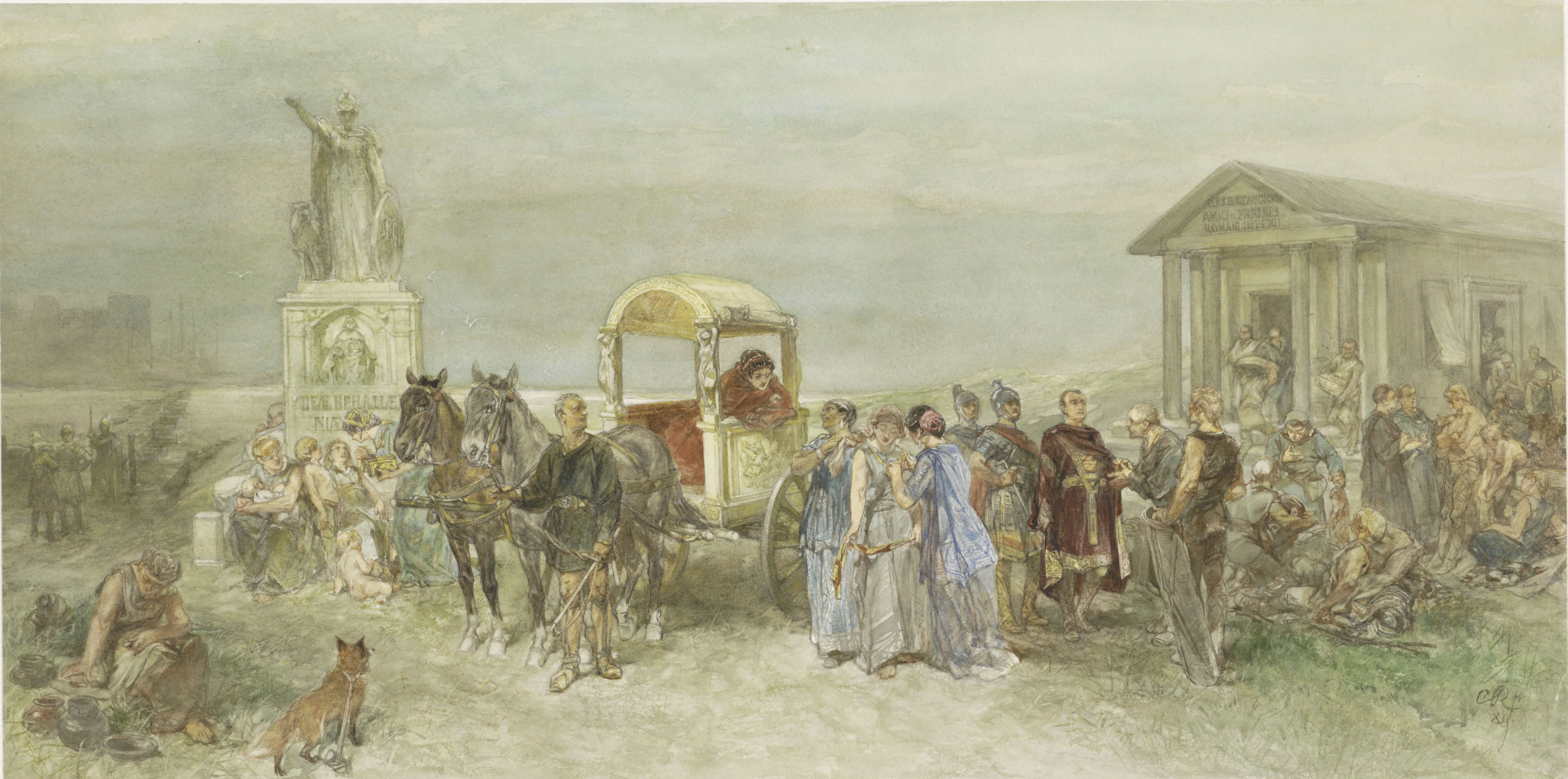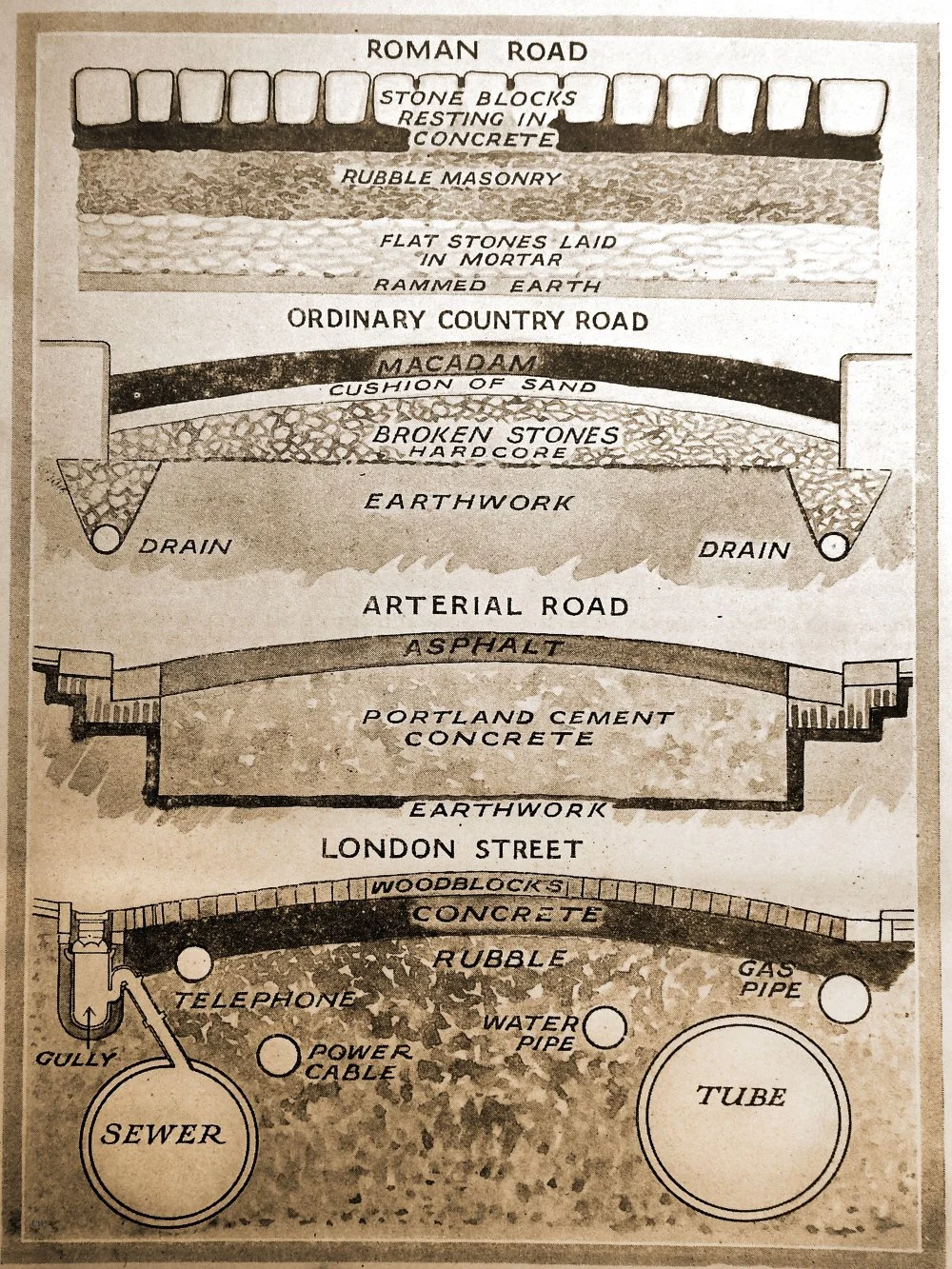
Marketplace with Romans and Batavieren. 1889/Alamy
It would be hard to overestimate the importance of roads in ancient Rome. They were initially built primarily for military use and, it must be said, they served their purpose perfectly. But as the empire grew, their functions expanded significantly. Roads made it possible to control already annexed provinces, facilitated communication networks across huge distances, and served as trade arteries. Rome grew and was fed by its incredibly sophisticated transportation system.
By the time of the late empire, an extensive road system totaling 400,000 kilometers had reached as far as Scotland and even North Africa. The location of the roads was always so well chosen that today some modern roads are laid on top of or are parallel to ancient roads, following the impeccable landmarks of Roman engineering.

Jules Laurens. Head of Roman road in Bithynia, Amasra (Asian Turkey)/Alamy
Most Roman roads are about 2,000 years old, and some of them are still usable, while modern roads fall into disrepair relatively quickly. You might think that we’ve lost some ancient architectural recipe, the secret to building durable roads, but we haven’t. It’s just that we now focus less on durability and more on meeting the demands of modern traffic, which prioritizes the extraordinary flatness of the pavement and the ease with which the roadbed can be repaired or replaced in the event of damage. The Romans built their roads to last for centuries, and a Roman road was always an epic project.

Map of Roman Empire. Red lines are roads/Wikimedia Commons
Much of what we know about Roman architecture, including road construction, is detailed in the writings of the Roman scholar, engineer, and architect Marcus Vitruvius Pollio. In the treatise De architectura (On Architecture, and published under the title Ten Books on Architecture), which contained almost all the knowledge of the art of building at the time, Vitruvius deduced three laws of Roman architecture, now known as the Vitruvian triad: firmitas, utilitas, venustas (firmness, commodity, and delight).

The old Roman Road at Hope Cross above Ladybower Reservoir/Wikimedia Commons
These principles formed the foundations of ancient Roman architecture, but they were by no means its only pillars. In the case of roads and other strategic structures, for example, the speed and cost of construction were also of great importance. The Romans approached this problem with great pragmatism—they rarely transported materials over long distances, which saved time and manpower. Instead, they simply used what was locally available, such as tuff, solidified lava, and resources from the nearest mines and quarries. As a result, Roman roads often seemed varied and dissimilar in their materials, but this diversity was only external. The construction technology itself adhered to unchanging standards that had been refined over centuries.

An early pictorial chart comparing different types of road building and construction - Roman road -Country road - Arterial road and a London street (made from wooden blocks)/Alamy
So, how do you build a road that will last 2,000 years?
Well, the first and most important element was proper planning—and it started with marking. This was done by a Roman surveyor known as a gromaticus. Using a special tool called a groma, he made calculations and left milestones along the entire route. These markers enabled the road to be as straight and level as possible. At the same time, a road project was drawn up, taking into account the terrain and the nearest sources of the required resources. Once the project was approved, construction began, which was carried out by either slaves or soldiers.
Large stone slabs were laid on compacted earth at the base of the road. After the slabs were levelled, Roman concrete was poured on top, a substance whose composition varied depending on the available materials but always included sand, lime, and ceramics. All the components were thoroughly pulverized and mixed, and water and crushed stone were added. Economically or strategically important roads could be made of four or five such layers, and if they were within the city limits, another layer was added for the sidewalk. As a result, the thickness of such a road could reach up to 240 centimeters, which is simply not comparable with most roads today.
Otherwise, Roman construction techniques were very similar to those used today. For example, the Romans also made the top layer of the road slightly convex so that rainwater would not ruin the pavement, but would roll down the sides of the road into drainage ditches instead.
All of this greatly extended the life of Roman roads, but even the best road needs to be repaired at some point. Surprisingly, some of these repairs would take place without human intervention. When a crack appeared in the road, the water that got in reacted with the lime to form a calcium-rich solution. This substance hardened and glued the damaged area together. More serious damage, however, had to be repaired by hand.
Evidence recently discovered in Pompeii suggests that residents repaired their roads by pouring molten iron over potholes. Some of these metal patches on the pavement have been preserved under a layer of ash along with small splatters of metal, which were likely the result of a vessel of molten iron being jostled while being carried from the smelter to the repair site. Whether this was a common occurrence or a peculiarity of this particular town remains to be seen.